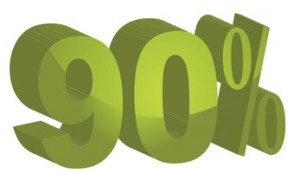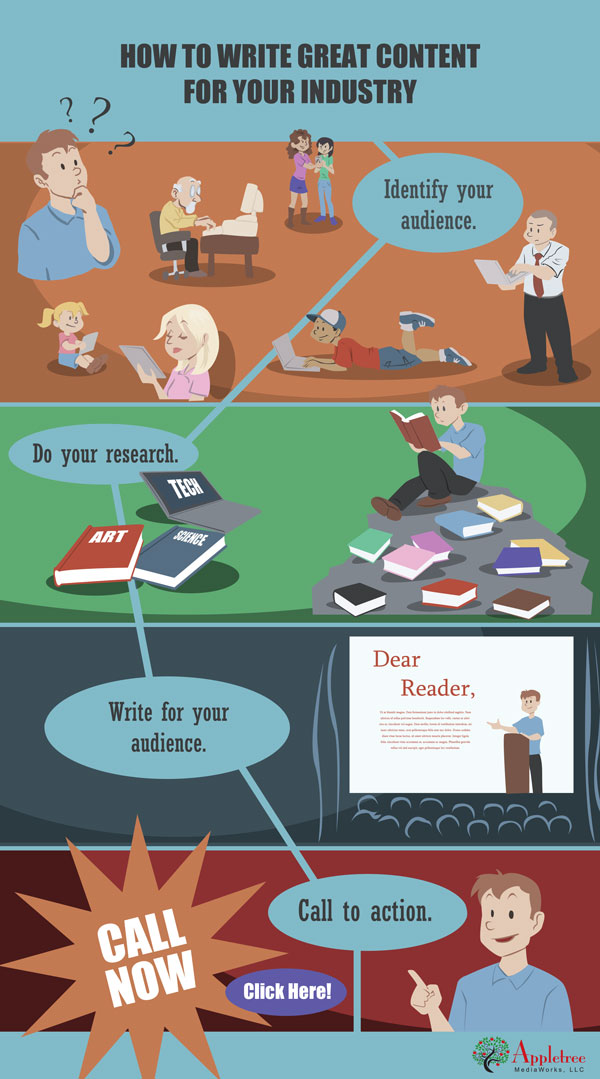Email Newsletters in the Digital Age
In a digital age, sending out email newsletters instead of paper newsletters has become much more popular. And why not? The marketing potential of cheap, nearly instant communication with interested customers is difficult to overstate.
The content within your newsletter can greatly affect your readership and business. Read on to learn what to include in your newsletter and how to organize it to more effectively generate leads.
Digital Versus Paper Newsletters
Digital Newsletter Pros:
Cheaper – Everyone is looking for a way to save money and sending out an electronic newsletter can cost much less than running a traditional mail equivalent.
Easy Distribution – Email is much easier to manage than paper mail. Email address lists are usually easier to keep up to date than mailing addresses. And with near instant delivery, you can send out newsletters much more frequently than by paper mail.
Better Targeted Audience – Since a user must opt in, you are marketing to a more targeted, engaged audience.
 Gain More Audience – A digital newsletter has a better chance of being shared than its paper equivalent. An online share opens your marketing up to a much wider audience, which drives more traffic to your website.
Gain More Audience – A digital newsletter has a better chance of being shared than its paper equivalent. An online share opens your marketing up to a much wider audience, which drives more traffic to your website.
Use of Statistics – Most email marketing services provide statistics including open, click, bounce, and unsubscribe rates. These statistics can help you better tailor your content to your audience. If your open rate is low maybe you need a more interesting and eye-catching subject line, for example.
Digital Newsletter Cons:
Easily Ignored or Lost – Amongst the barrage of emails people receive on a daily basis, your newsletter can easily be overlooked.
 Viewed as Spam – Your subscribers’ email provider might tag your newsletter as spam. It’s a good idea to encourage your subscribers to add your newsletter’s FROM address to their address book. This prevents email programs from flagging your newsletters as spam.
Viewed as Spam – Your subscribers’ email provider might tag your newsletter as spam. It’s a good idea to encourage your subscribers to add your newsletter’s FROM address to their address book. This prevents email programs from flagging your newsletters as spam.
What should be in your Newsletter
90% Educational and 10% Promotional  – Promoting yourself too much can be a major turn off. If your newsletter constantly makes a subscriber feel pressured to buy, they will likely unsubscribe.
– Promoting yourself too much can be a major turn off. If your newsletter constantly makes a subscriber feel pressured to buy, they will likely unsubscribe.

Instead, include content that educates the subscriber or has relevant information that ties in with the items/services you are promoting.
Creative Subject Lines – A good subject is the first thing people see. Interesting subject lines entice users to click. Read some tips for creating a good subject line.
Another option is to use the same subject line each time you send out your newsletter. This may seem boring but can build a sense of familiarity with your subscriber base so they do not accidentally delete your messages.
One Main Call to Action – Most of the time you will have many call-to-actions within your newsletter, but make sure to highlight only one of them so as no to overwhelm your readers.
Straight Forward Design – Stay away from long paragraphs and bullet your information. This makes it easier to read and keeps your audience interested.
 Shares, Links, and Unsubscribe – Include an easy share button. Many times if your audience likes your content they will want to share it.
Shares, Links, and Unsubscribe – Include an easy share button. Many times if your audience likes your content they will want to share it.
Have links to your website and any other websites you may have a partnership with.
Always give your readers the option to unsubscribe. If your unsubscribe feature does not work, it will frustrate your subscribers and probably get you blacklisted for violating the CAN-SPAM Act.
 Contact Information – Have your business contact information prominently displayed in your newsletter.
Contact Information – Have your business contact information prominently displayed in your newsletter.
Photos – Have a balance between photos and text. Having too many of either can make your email look like spam. Try to spread your photos out and link them back to a relevant web page.
Let Appletree Mediaworks Help you
Need help designing, managing, and sending your newsletter?
Let Appletree Mediaworks take care of your newsletter. We will work with you as often as needed to gather content, design the template, manage your email list, and schedule your newsletter. We stay up with all the latest technology trends and laws so you can focus on running your business.
[button size=”normal” link=”https://appletreemediaworks.com/contact-appletree/” target=”_blank” color=”blue” align=”left”]Contact Us Today[/button]
[space5]
How To Write Great Website Content For Your Industry
 Great content for your industry is more important than ever for your website to climb the ranks in Google’s search engine, to grow your business, to attract people for your business. And while it can seem painstaking to write out all that needed content for your own website, breaking down the process makes it manageable and much less time consuming.
Great content for your industry is more important than ever for your website to climb the ranks in Google’s search engine, to grow your business, to attract people for your business. And while it can seem painstaking to write out all that needed content for your own website, breaking down the process makes it manageable and much less time consuming.
1) Identify Your Audience and What They Want
Who is most apt to visit your website and just what is it they’re looking for? You can gather information to identify your target audience by looking for reader feedback and blog comments, setting up surveys, looking at reports or studies , or speaking with people at length.
Once you have your target audience identified, figure out what they want. Are they seeking specific information? What are their concerns? What questions are your audience always asking, that you would like them to know?
 2) Find a Topic to Write On and Do Your Research
2) Find a Topic to Write On and Do Your Research
Take those commonly asked questions and concerns of your audience or better yet, combine them with keyword searches to find useful information for your content. From there do your research to become an expert if you are not already. And if you are? Dig a little deeper to get further insight into the topic.
It’s at this point you can take a look at what your competitors and associates are doing and learn what’s industry-standard if you have not already. While it may not make you stand out to do exactly what everyone else is doing, knowing what works in the industry and what does not can only benefit – even if you decide to break those rules later.
Internet readers like to be educated and like spending their time learning something of value, but tend to distrust a hard sale. Your website is more likely to maintain return readers and gain loyalty if the audience values your word as an expert, and feels that your website has something to come back to and share with social media.
 3) Write for Your Audience
3) Write for Your Audience
Use casual tone on the web for most industries, but don’t use excess jargon or slang unless it expressly gears toward your target audience. Keywords can be added to the content for SEO, but keep it organic and don’t force it.
Keep concise and organized in your writing, making sure to add headers and bullet points or lists to make text easily scanable. People on the internet do not expect to spend as much time reading as they would in print, so get to your point quickly to keep attention.
4) Create Content with a Call to Action
The internet is an active medium. People like to learn, share, interact, and feel like they’ve walked away from something more than passive information, so embrace this and give your readers something to do. Use active voice in your content and ultimately give readers a call to action, whether it be to interact with the website, call for an estimate, try out what they have learned on their own, or even click the ‘share’ button.
A static, unchanging website will fall by the wayside of active, continually updated sites no matter your industry, and Appletree Mediaworks LLC can work with you to create a dynamic website where creating and updating your own content is simple and takes little effort.





